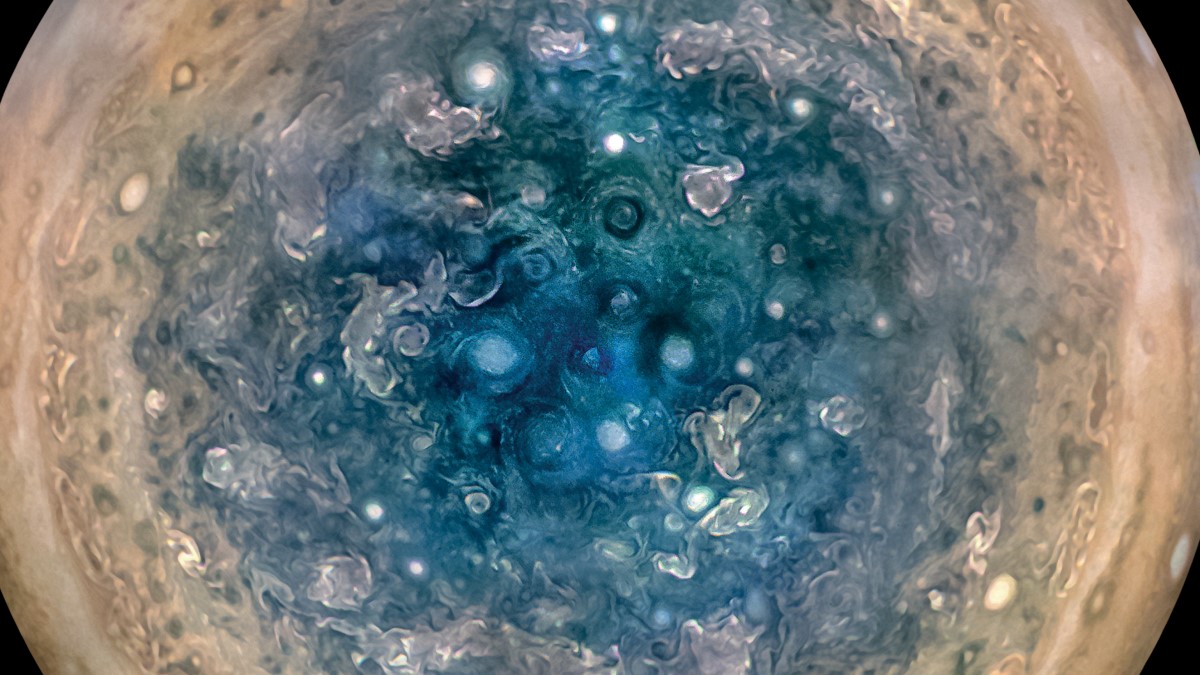Science
Juno Spacecraft Enhances Understanding of Jupiter’s Mysteries

The Juno spacecraft, launched by NASA in 2011, is significantly advancing our understanding of Jupiter, the largest planet in our solar system. In a recent episode of the Physics World Weekly podcast, principal investigator Scott Bolton discussed the mission’s ongoing contributions to planetary science with host Margaret Harris. Bolton detailed how Juno continues to deliver groundbreaking insights into the gas giant, reshaping our knowledge of not only Jupiter but also other gas giants in the universe.
Key Discoveries and Technological Resilience
During the conversation, Bolton highlighted several important findings that Juno has revealed about Jupiter’s atmosphere and magnetic field. The spacecraft’s JunoCam has provided stunning images of Jupiter and its moons, showcasing details previously unseen. These images have not only captivated the public but also offered scientists valuable data about the planet’s dynamic weather systems.
Although the Juno mission was initially expected to operate for only a few years, the spacecraft remains functional and continues to gather data despite the harsh conditions of Jupiter’s intense radiation belts. Bolton explained that the Juno team has successfully rejuvenated components that were damaged by radiation, demonstrating a level of resilience that will inform the design of future space missions.
Uncertain Future for the Juno Mission
Despite its achievements, the future of the Juno mission is in question. Currently, the mission is scheduled to conclude at the end of September 2024. Bolton addressed this uncertainty during the podcast, emphasizing the need for continued funding and support to extend the mission’s valuable research.
The insights gained from Juno are crucial for understanding not just Jupiter but the broader characteristics of gas giants. As scientists strive to learn more about these massive planets, the contributions of the Juno mission will likely play a pivotal role in the future of planetary science.
As the mission progresses, the scientific community and space enthusiasts alike continue to watch with anticipation, eager for the next revelations that Juno may uncover about our solar system’s largest planet.
-

 Health3 months ago
Health3 months agoNeurologist Warns Excessive Use of Supplements Can Harm Brain
-

 Health3 months ago
Health3 months agoFiona Phillips’ Husband Shares Heartfelt Update on Her Alzheimer’s Journey
-

 Science2 months ago
Science2 months agoBrian Cox Addresses Claims of Alien Probe in 3I/ATLAS Discovery
-

 Science2 months ago
Science2 months agoNASA Investigates Unusual Comet 3I/ATLAS; New Findings Emerge
-

 Science1 month ago
Science1 month agoScientists Examine 3I/ATLAS: Alien Artifact or Cosmic Oddity?
-

 Entertainment5 months ago
Entertainment5 months agoKerry Katona Discusses Future Baby Plans and Brian McFadden’s Wedding
-

 Science1 month ago
Science1 month agoNASA Investigates Speedy Object 3I/ATLAS, Sparking Speculation
-

 Entertainment4 months ago
Entertainment4 months agoEmmerdale Faces Tension as Dylan and April’s Lives Hang in the Balance
-

 World3 months ago
World3 months agoCole Palmer’s Cryptic Message to Kobbie Mainoo Following Loan Talks
-

 Science1 month ago
Science1 month agoNASA Scientists Explore Origins of 3I/ATLAS, a Fast-Moving Visitor
-

 Entertainment2 months ago
Entertainment2 months agoLewis Cope Addresses Accusations of Dance Training Advantage
-

 Entertainment3 months ago
Entertainment3 months agoMajor Cast Changes at Coronation Street: Exits and Returns in 2025









